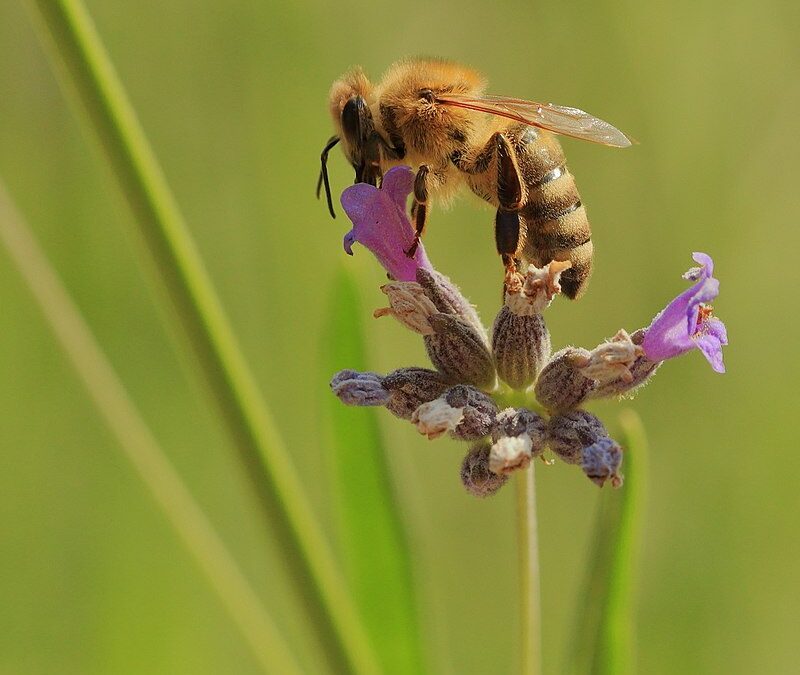These days, many people are aware that bee populations around the world are under threat. The decline in bee populations is driven by multiple interacting factors, including habitat loss/fragmentation, pesticides, pathogens/parasites, pollution, invasive species, and climate change. The interaction of these factors creates cumulative stress, making it difficult for bee populations to recover. Last year, scientists at University of Würzburg in Germany published a study investigating the impact of heatwaves on bumblebees’ ability to detect floral scents, a critical function for their foraging behavior and pollination efficiency. Given the increasing frequency and intensity of heatwaves due to climate change, understanding how elevated temperatures affect pollinators is essential for ecosystem health and agriculture.
Bumblebees rely heavily on olfactory cues to locate flowers and assess their quality. Floral scents are composed of volatile organic compounds (VOCs) that bumblebees detect using their antennae. Previous research has shown that environmental stressors can impair insect sensory systems, but the specific effects of heat stress on bumblebee olfaction remained unclear.
The researchers conducted controlled laboratory experiments exposing bumblebees (Bombus terrestris) to simulated heatwave conditions. Bees were subjected to elevated temperatures of 40°C for varying durations to mimic natural heatwave scenarios. Post-exposure, the bees’ antennal responses to key floral VOCs were measured using electroantennography (EAG), a technique that records electrical responses of insect antennae to odor stimuli. Additionally, behavioral assays assessed the bees’ ability to detect and respond to floral scents after heat exposure.
The findings revealed a significant reduction in antennal sensitivity to floral VOCs following heat exposure. Bees exposed to 40°C for extended periods showed diminished EAG responses, indicating impaired olfactory function. Behavioral assays corroborated these results, with heat-stressed bees exhibiting decreased attraction to floral scents compared to control groups. The impairment was more pronounced with longer exposure durations, suggesting a dose-dependent relationship between heat stress and olfactory dysfunction.
The study demonstrates that heatwaves can directly impair bumblebee olfaction, potentially disrupting their foraging efficiency and pollination services. Reduced ability to detect floral scents may lead to decreased food intake, affecting colony health and reproduction. The findings highlight a previously underappreciated consequence of climate change on pollinator sensory biology. Moreover, the study suggests that the thermal sensitivity of bumblebee olfactory systems could serve as an early indicator of environmental stress impacts on pollinators.
As climate change continues to increase the frequency of extreme temperature events, understanding their effects on pollinators is crucial. This research provides evidence that heatwaves can impair bumblebee olfactory function, potentially compromising their ecological roles. Mitigating climate change impacts and developing strategies to support pollinator resilience are essential for maintaining ecosystem services and biodiversity.
Powers Scientific has been helping advance research like this for over 30 years with Drosophila and Small Insect Chambers designed for studying insects of all varieties. Our chambers have a 15-60°C programmable temperature range, making them flexible for a multitude of applications. The Level 3 chambers are controlled by thermoelectric (Peltier) coolers and come equipped with ultrasonic humidity generators capable of providing up to 80% relative humidity. Programmable (and optionally dimmable) digital clock-controlled LED lighting is also included on the Level 2 and 3 models for complete control over lighting conditions in the chamber.
For more information, see our Drosophila and Small Insect Chambers product page, visit our Contact Us page, or call us at (800) 998-0500.

